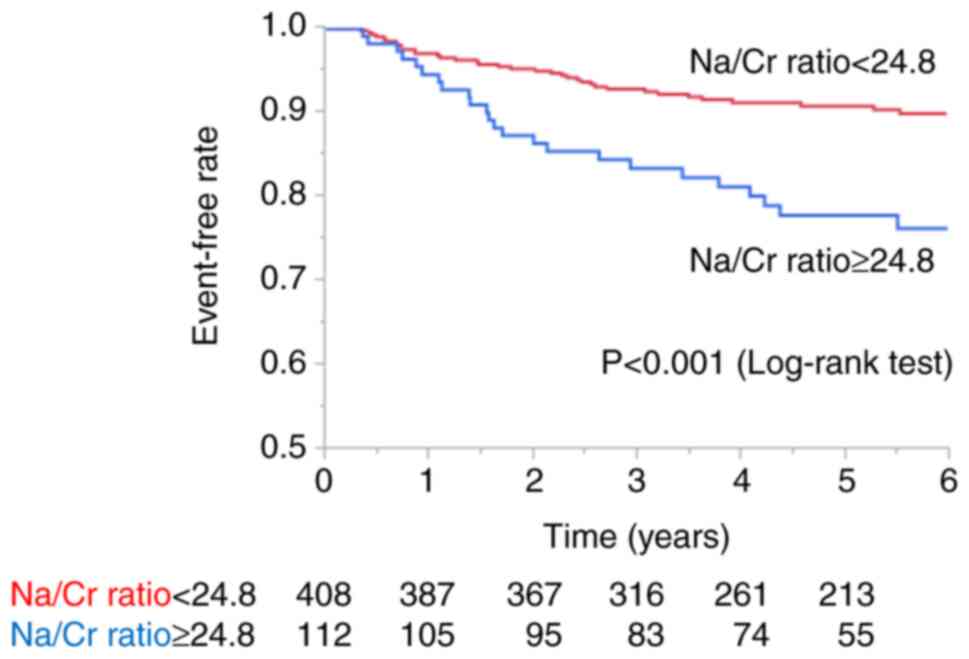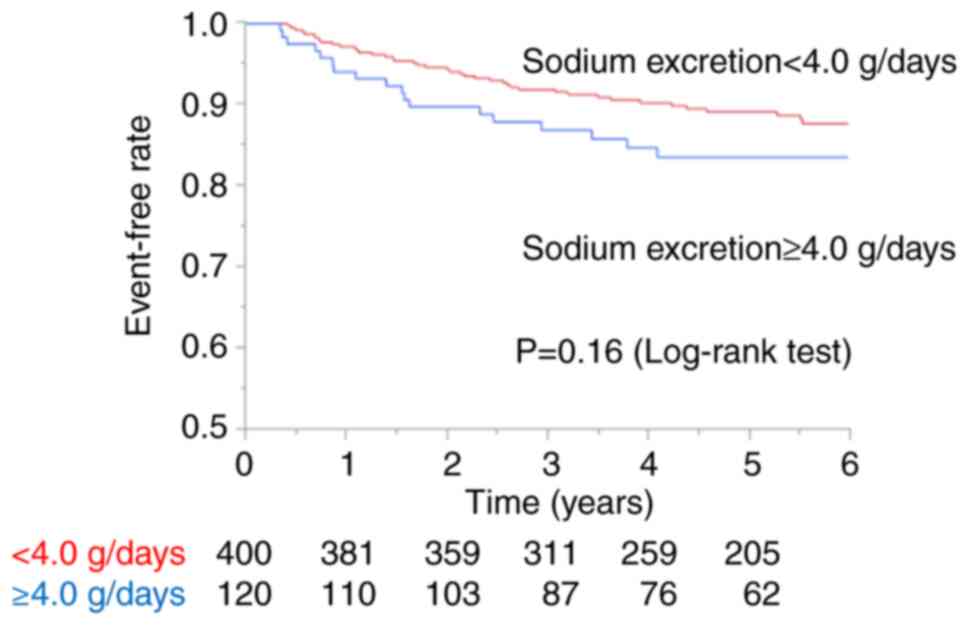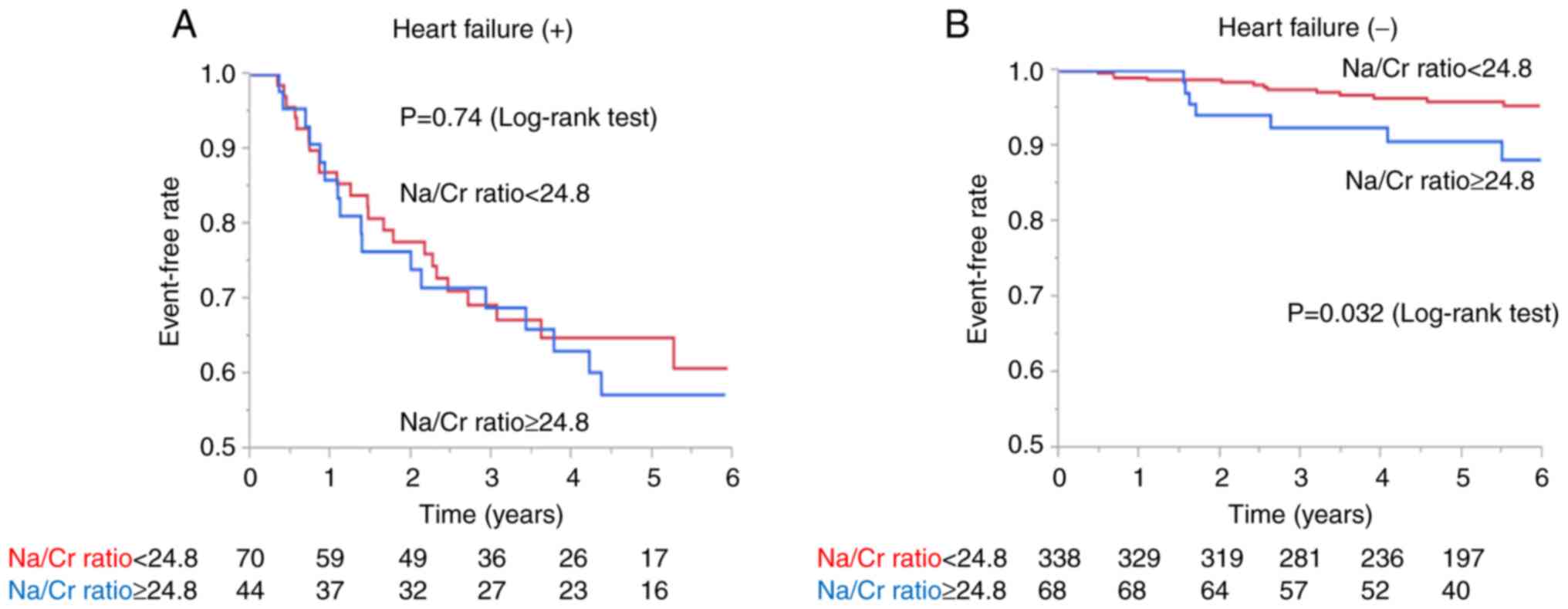|
1
|
McDonagh TA, Metra M, Adamo M, Gardner RS,
Baumbach A, Böhm M, Burri H, Butler J, Čelutkienė J, Chioncel O, et
al: ESC scientific document group: 2021 ESC guidelines for the
diagnosis and treatment of acute and chronic heart failure. Eur
Heart J. 42:3599–3726. 2021.PubMed/NCBI View Article : Google Scholar
|
|
2
|
Writing Committee, Maddox TM, Januzzi JL
Jr, Allen LA, Breathett K, Butler J, Davis LL, Fonarow GC, Ibrahim
NE, Lindenfeld J, et al: 2021 update to the 2017 ACC expert
consensus decision pathway for optimization of heart failure
treatment: Answers to 10 pivotal issues about heart failure with
reduced ejection fraction: A report of the American college of
cardiology solution set oversight committee. J Am Coll Cardiol.
77:772–810. 2021.PubMed/NCBI View Article : Google Scholar
|
|
3
|
Gerber Y, Weston SA, Redfield MM,
Chamberlain AM, Manemann SM, Jiang R, Killian JM and Roger VL: A
contemporary appraisal of the heart failure epidemic in Olmsted
County, Minnesota, 2000 to 2010. JAMA Intern Med. 175:996–1004.
2015.PubMed/NCBI View Article : Google Scholar
|
|
4
|
Sadanaga T, Hirota S, Enomoto K, Kohsaka
S, Tsujita K, Ito M, Mitamura H and Fukuda K: Evaluation of sodium
intake for the prediction of cardiovascular events in Japanese
high-risk patients: the ESPRIT study. Hypertens Res. 42:233–240.
2019.PubMed/NCBI View Article : Google Scholar
|
|
5
|
Tanaka T, Okamura T, Miura K, Kadowaki T,
Ueshima H, Nakagawa H and Hashimoto T: A simple method to estimate
populational 24-h urinary sodium and potassium excretion using a
casual urine specimen. J Hum Hypertens. 16:97–103. 2002.PubMed/NCBI View Article : Google Scholar
|
|
6
|
Mann SJ and Gerber LM: Estimation of
24-hour sodium excretion from spot urine samples. J Clin Hypertens
(Greenwich). 12:174–180. 2010.PubMed/NCBI View Article : Google Scholar
|
|
7
|
Wan ER, Cross J, Sofat R and Walsh SB:
24-hour vs. spot urinary sodium and potassium measurements in adult
hypertensive patients: A cohort validation study. Am J Hypertens.
32:983–991. 2019.PubMed/NCBI View Article : Google Scholar
|
|
8
|
Lee SG, Lee W, Kwon OH and Kim JH:
Association of urinary sodium/creatinine ratio and urinary
sodium/specific gravity unit ratio with blood pressure and
hypertension: KNHANES 2009-2010. Clin Chim Acta. 424:168–173.
2013.PubMed/NCBI View Article : Google Scholar
|
|
9
|
Kim JG, Han SW, Yi JH, Park HC and Han SY:
Development of objective indicators for quantitative analysis of
sodium intake: the sodium to potassium ratio of second-void urine
is correlated with 24-hour urinary sodium excretion. Nutr Res
Pract. 14:25–31. 2020.PubMed/NCBI View Article : Google Scholar
|
|
10
|
Sadanaga T, Hirota S and Mitamura H:
Factors associated with heart failure hospitalization in patients
with high sodium excretion: subanalysis of the ESPRIT, evaluation
of sodium intake for the prediction of cardiovascular events in
Japanese high-risk patients, cohort study. Heart Vessels. 36:85–91.
2021.PubMed/NCBI View Article : Google Scholar
|
|
11
|
Kawano Y, Tsuchihashi T, Matsuura H, Ando
K, Fujita T and Ueshima H: Working Group for Dietary Salt Reduction
of the Japanese Society of Hypertension. Report of the working
group for dietary salt reduction of the Japanese society of
hypertension: (2) assessment of salt intake in the management of
hypertension. Hypertens Res. 30:887–893. 2007.PubMed/NCBI View Article : Google Scholar
|
|
12
|
Umemura S, Arima H, Arima S, Asayama K,
Dohi Y, Hirooka Y, Horio T, Hoshide S, Ikeda S, Ishimitsu T, et al:
The Japanese society of hypertension guidelines for the management
of hypertension (JSH 2019). Hypertens Res. 42:1235–1481.
2019.PubMed/NCBI View Article : Google Scholar
|
|
13
|
Rhee MY, Kim JH, Shin SJ, Gu N, Nah DY,
Park JH, Kim SW, Kim HJ, Oh KW, Kim JH and Lee SY: Estimating
24-hour urine sodium from multiple spot urine samples. J Clin
Hypertens (Greenwich). 19:431–438. 2017.PubMed/NCBI View Article : Google Scholar
|
|
14
|
Rhee MY, Kim JH, Shin SJ, Gu N, Nah DY,
Hong KS, Cho EJ and Sung KC: Estimation of 24-hour urinary sodium
excretion using spot urine samples. Nutrients. 6:2360–2375.
2014.PubMed/NCBI View Article : Google Scholar
|
|
15
|
Martens P, Dupont M, Verbrugge FH, Damman
K, Degryse N, Nijst P, Reynders C, Penders J, Tang WHW, Testani J
and Mullens W: Urinary sodium profiling in chronic heart failure to
detect development of acute decompensated heart failure. JACC Heart
Fail. 7:404–414. 2019.PubMed/NCBI View Article : Google Scholar
|
|
16
|
Desai AS and Mc Causland FR: Urinary
sodium as a heart failure biomarker: More complicated than it
seems. JACC Heart Fail. 7:415–417. 2019.PubMed/NCBI View Article : Google Scholar
|

















